Monarchs nectaring on Gayfeather (Liatris sp.)
This year has become our new record for both heat and drought. According to TX-Butterfly (a listserv I’m on) monarchs took a more westerly course this year across drought-stricken Texas, but yesterday another list member and I both reported a lot of monarchs flying by or nectaring east of the Balcones Fault line–between there and I-35. Yesterday I had guests from Seattle; we went out on the land and found monarchs nectaring on Liatris, gayfeather, one of the very few things blooming this year. Usually we have lots of Maximilian sunflower, frostweed, and the gayfeather, and then some late other flowers.
This year we have dead grass, deer-browsed sunflower stalks (and not many that are flowering at all) and no frostweed. Those magenta stalks are the largest patch of Gayfeather; some of it was stunted (grew to be less than half that height and then dropped its needle-like leaves) and some of it didn’t really flower until after last weekend’s rains. But the monarchs seem to like it a lot. So do some large bees (I don’t know the species yet.)
I didn’t see any other species of bee on the Gayfeather, but there were a lot of these, and they were competing with the monarchs for perching space. I did see other butterflies–Orange Sulphur, a little skipper that flitted off before I could get a good picture, and something even smaller.
I was out later than our guests yesterday (had spent the morning and midday in the city at a choir rehearsal) and it was breezy enough to make the Gayfeather stalks sway, so a lot of the pictures show windblown blurs of purple and orange. But here are a few more of the monarchs.
All the larger patches–and some individual stalks–had monarchs nectaring on them; the multi-stalked plants usually had 3-6.
For comparison: here are pictures of monarchs during migration in 2006:
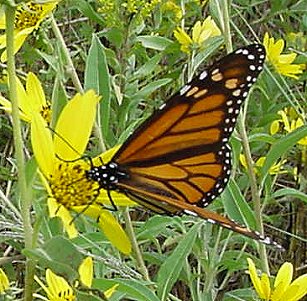 Monarch on Maximilian sunflower
Monarch on Maximilian sunflower
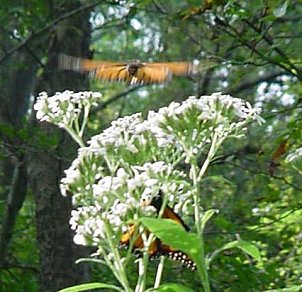 Monarchs on Frostweed in creek woods (note green leaves of understory; this year that area is dead-brown.)
Monarchs on Frostweed in creek woods (note green leaves of understory; this year that area is dead-brown.)
Like many others interested in monarch migration and survival (which is in doubt due to multiple factors, mostly human-related, from climate change to development to the use of measures to control insect pests that also impact non-pests like monarchs) I worried before the migration season how these insects could make it across the hundreds of miles of dry, flowerless Texas.
One thing I learned from specialists on the listserv is that monarchs can “nectar” on the sugary fluid produced by aphids on tree leaves–but many of the trees have died. Not all, however, and the hardy Gayfeather is producing flowers and nectar now, as these monarchs and the bees prove.
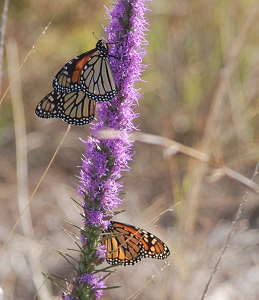
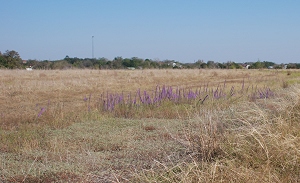
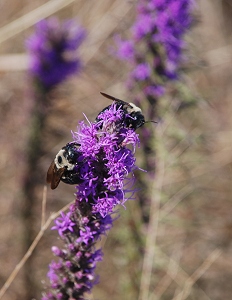
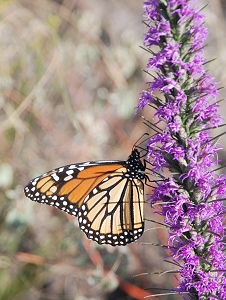
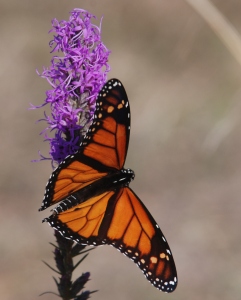
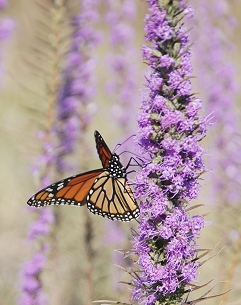
Comment by Martin LaBar — October 21, 2011 @ 4:42 am
Thanks for those photos, and the accompanying text. I’ve seen monarchs in South Carolina, sipping nectar on what we call butterflybush.
Comment by Jonathan Schor — November 22, 2011 @ 8:07 pm
Simply beautiful. I learned a new word, looking at your plant inventory. Looked up forb on the Internet.n